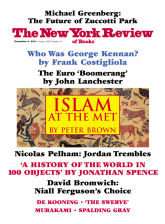Sarah Blaffer Hrdy is one of the most original and influential minds in evolutionary anthropology. She first became known for her field study of Hanuman langurs, the sacred monkeys that range widely in the Indian peninsula. They are large and sometimes dangerous, and Hrdy was among that second generation of bold primatologists, just behind Jane Goodall and Diane Fossey, who did original work with primates.
Hrdy discovered, among other things, that dominant males in a group are challenged from time to time by roving adventurers who can mate only by defeating them. If defeated, the former leaders slink away, often wounded, while their successors attack and kill all infants under six months old. This brings their mothers back into heat, and the slain infants are supplanted by the new males’ offspring. Females resist this bravely, but to little avail.
If such behavior had been limited to langurs, it might have been an anomaly. But thanks in no small part to Hrdy’s leadership, it was also documented in chimpanzees, patas monkeys, lions, and many other species. Competitive infanticide was seen as a dark side of Darwinism, and a confirmation that no part of nature is free from the amoral logic of natural selection.
Hrdy went on to write a well-received book on the evolution of females, The Woman That Never Evolved.
Many years later, Hrdy took on another heroine of anthropology and psychology, the good mother. This persona, a natural extension of the woman that never evolved, was the mother that never evolved—the one who renounced every other earthly ambition or delight, gave birth to new life in a spasm of ecstatic pain, and took her infant into her arms, prepared to sacrifice her own life for the welfare of her young.
-
1
Harvard University Press, 1981. ↩
-
2
Mother Nature: A History of Mothers, Infants, and Natural Selection (Pantheon, 1999). ↩
-
3
Aldine, 1968. ↩
-
4
Edited by Frances Dahlberg (Yale University Press, 1981). ↩
-
5
Dean Falk, “Prelinguistic Evolution in Early Hominins: Whence Motherese?,” Behavioral and Brain Sciences, Vol. 27, No. 4 (2004). ↩
-
6
Basic Books, three volumes, 1969–1980. ↩
-
7
See Jay Belsky and others in the NICHD Early Child Care Research Network, “Are there long-term effects of early child care?,” Child Development, Vol. 78, No. 2 (2007). ↩
-
8
See Sarah E. Watamura et al., “Morning-to-Afternoon Increases in Cortisol Concentrations for Infants and Toddlers at Child Care: Age Differences and Behavioral Correlates,” Child Development, Vol. 74, No. 4 (2003). ↩
-
9
Jane B. Lancaster and Chet S. Lancaster, “Parental Investment: The Hominid Adaptation,” in How Humans Adapt, edited by Donald J. Ortner (Smithsonian Institution Press, 1983). ↩
-
10
Kristen Hawkes, “Grandmothers and the Evolution of Human Longevity,” American Journal of Human Biology, Vol. 15, No. 3 (2003). ↩
-
11
Beatrice B. Whiting and John W.M. Whiting, Children of Six Cultures: A Psychocultural Analysis (Harvard University Press, 1975). ↩
-
12
Melvin Konner, “Aspects of the Developmental Ethology of a Foraging People,” in Ethological Studies of Child Behavior, edited by N.G.B. Jones (Cambridge University Press, 1972). ↩
-
13
Ann Cale Kruger and Melvin Konner, “Who Responds to Crying? Maternal Care and Allocare Among the !Kung,” Human Nature, Vol. 21, No. 3 (2010). ↩
-
14
For a review see Melvin Konner, “Hunter-Gatherer Infancy and Childhood: the !Kung and Others.” in Hunter-Gatherer Childhoods: Evolutionary, Developmental and Cultural Perspectives, edited by Barry S. Hewlett and Michael E. Lamb (Aldine Transaction Publishers, 2005). ↩





